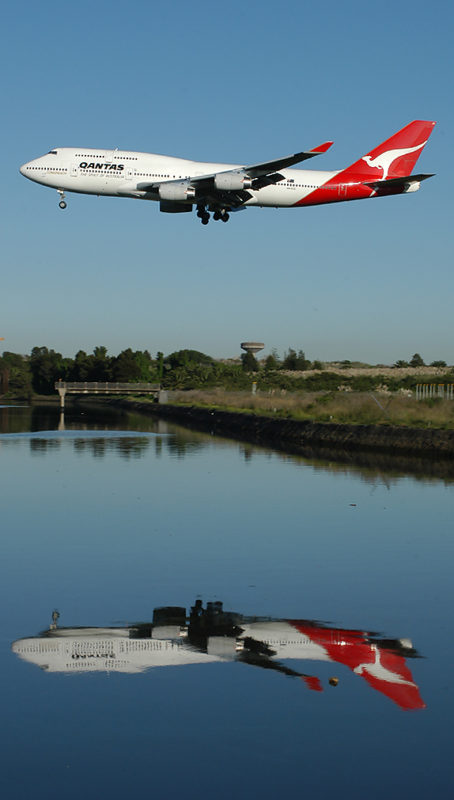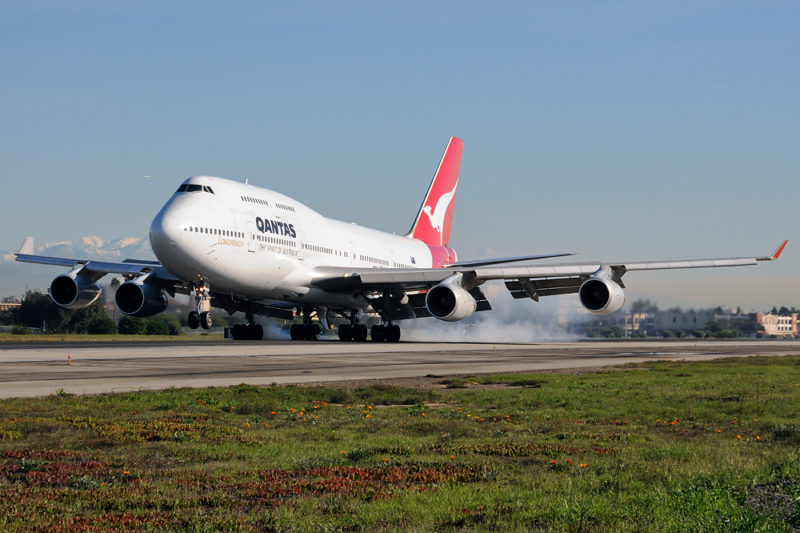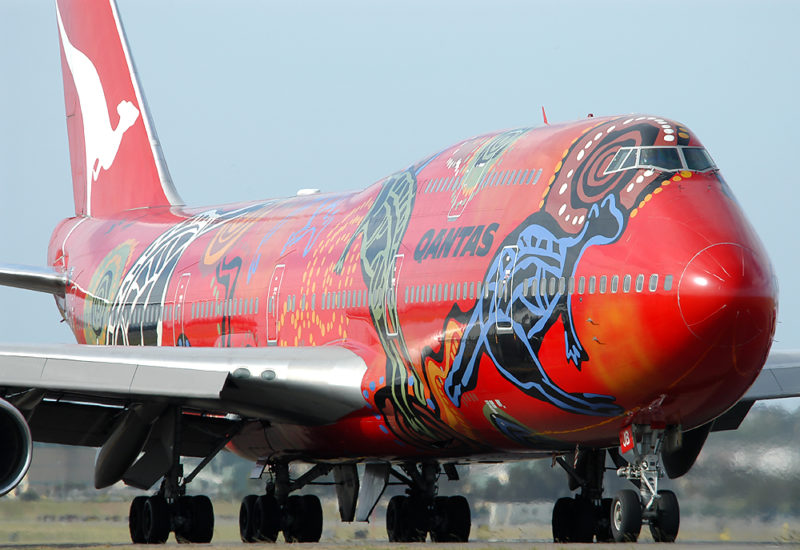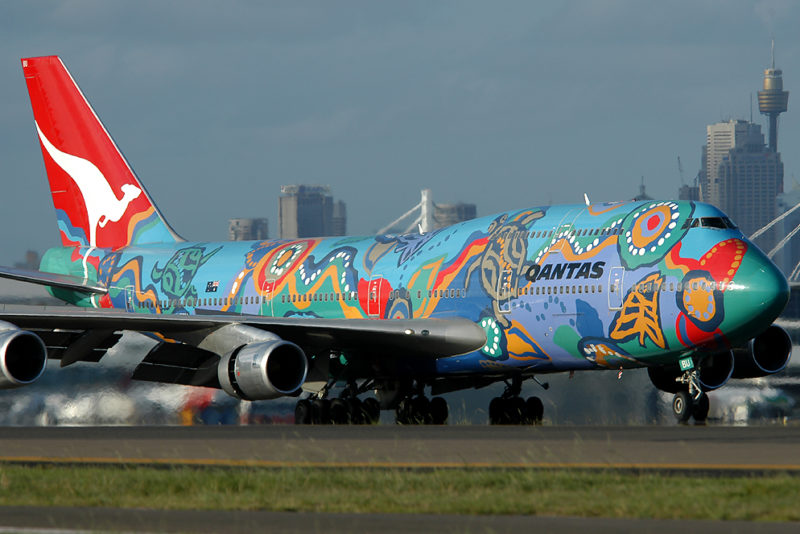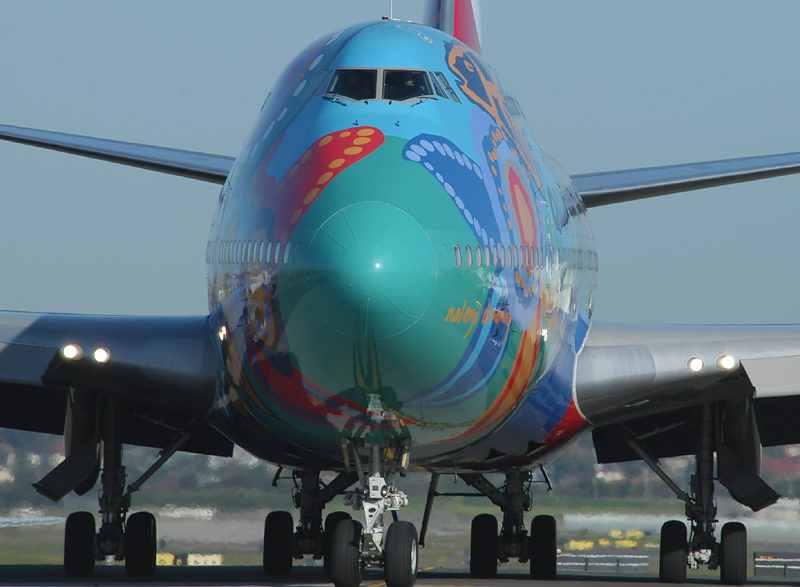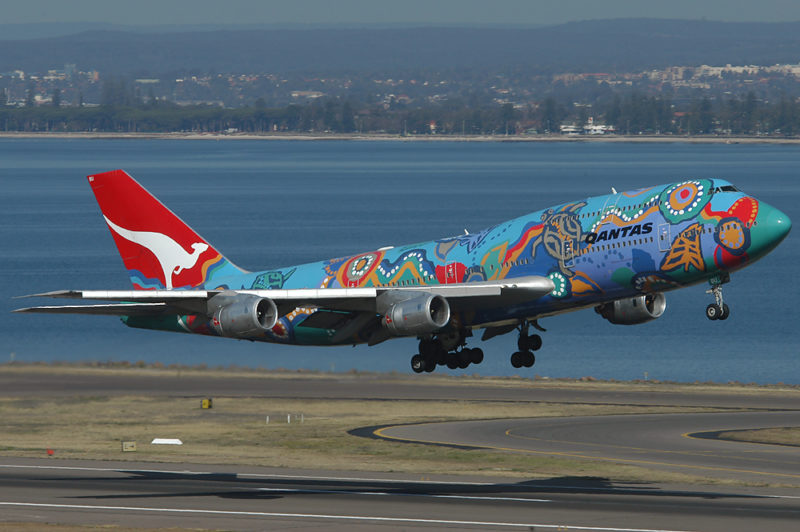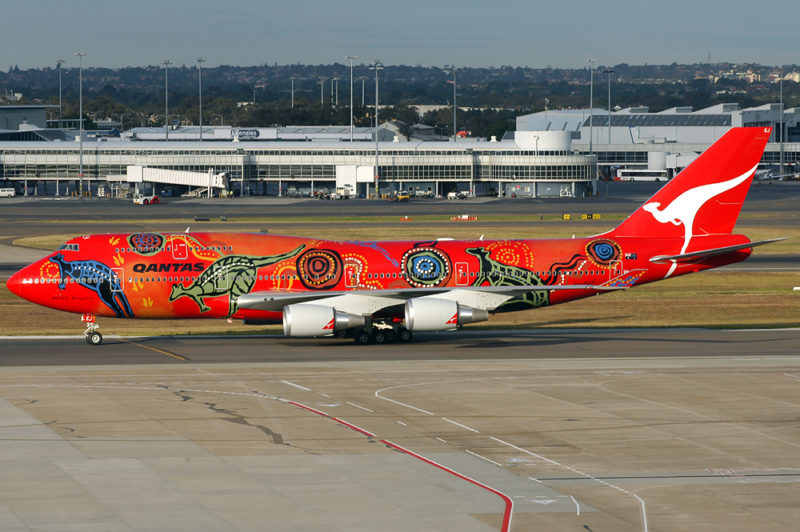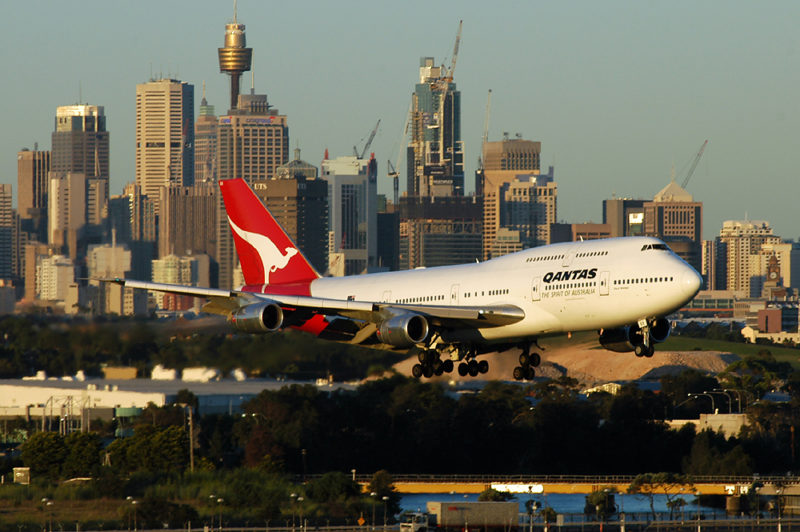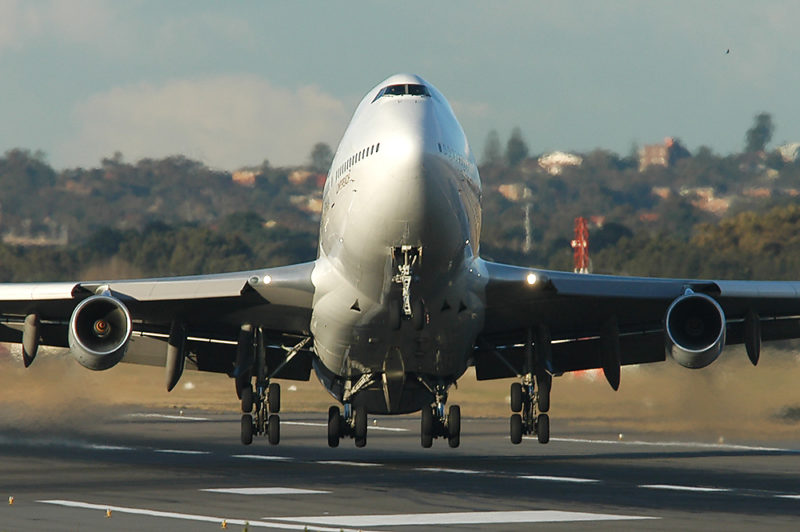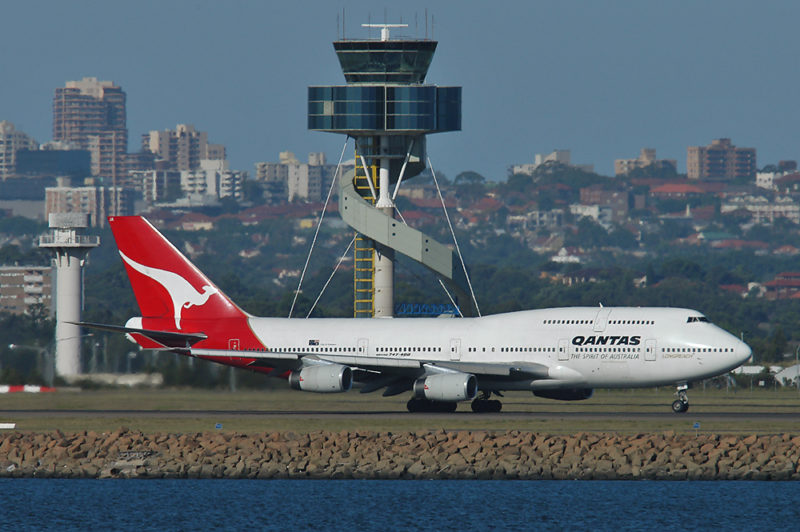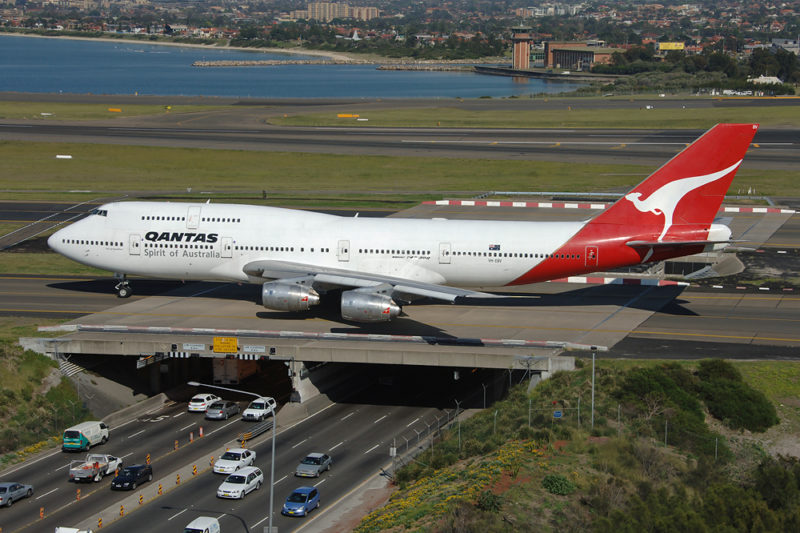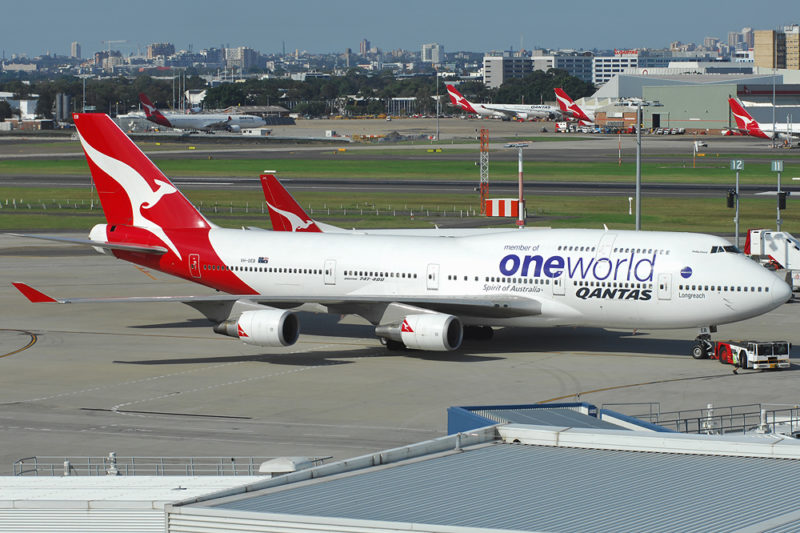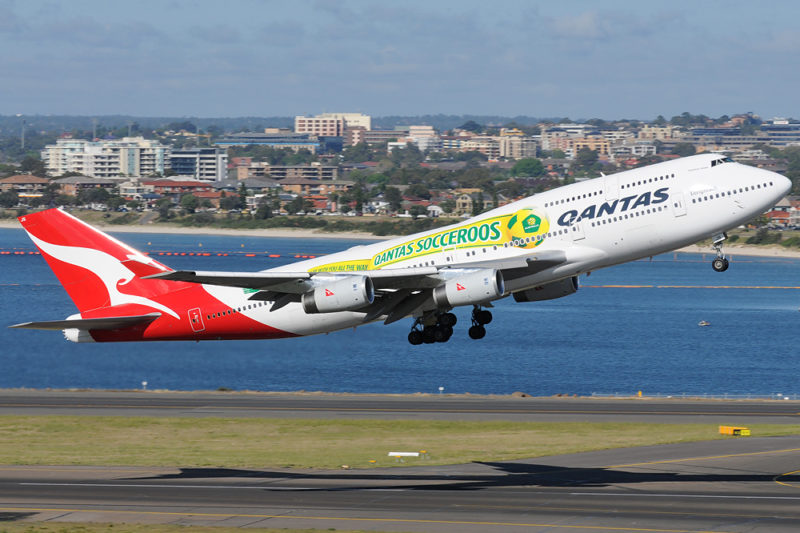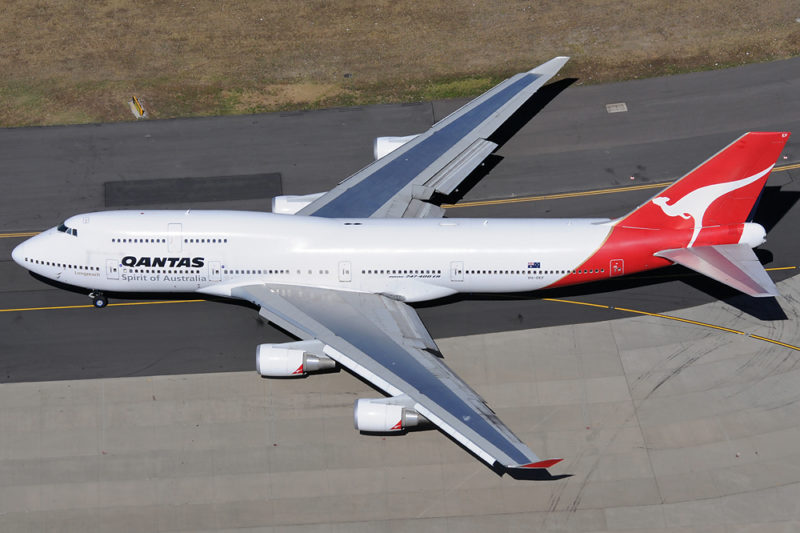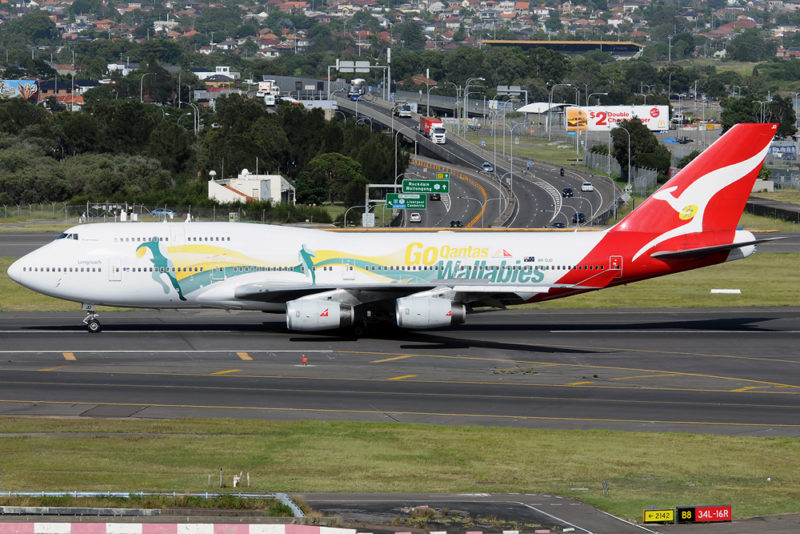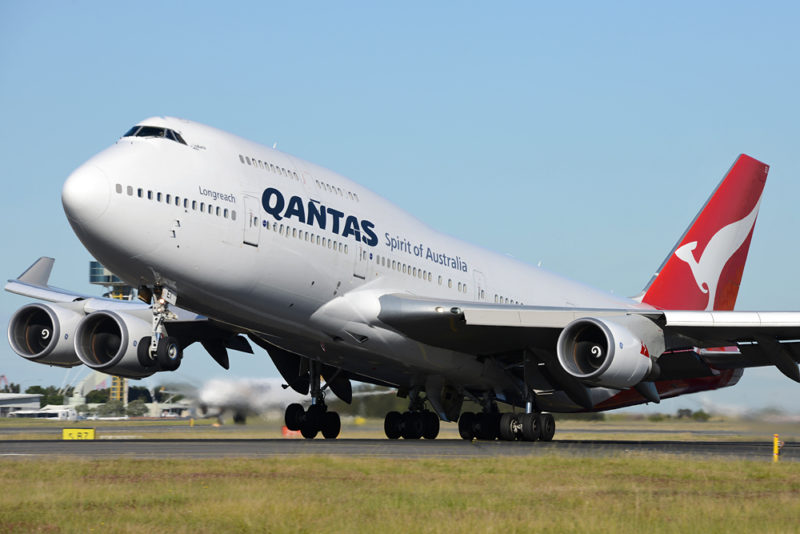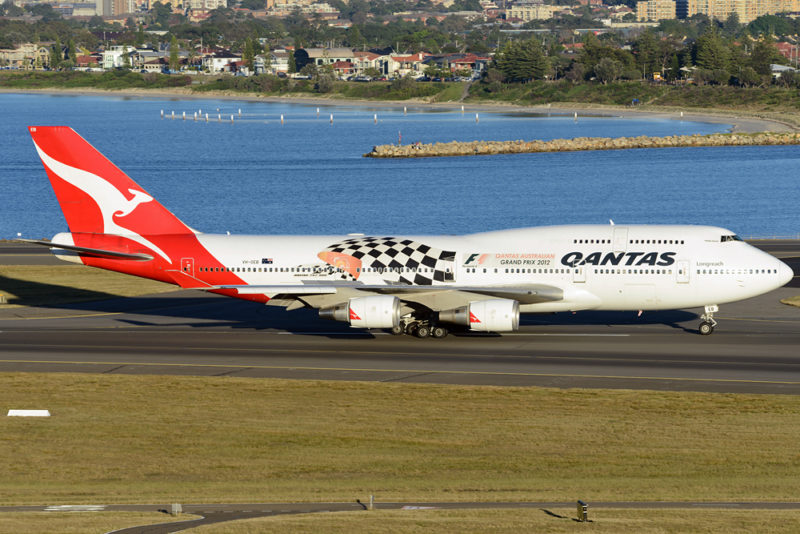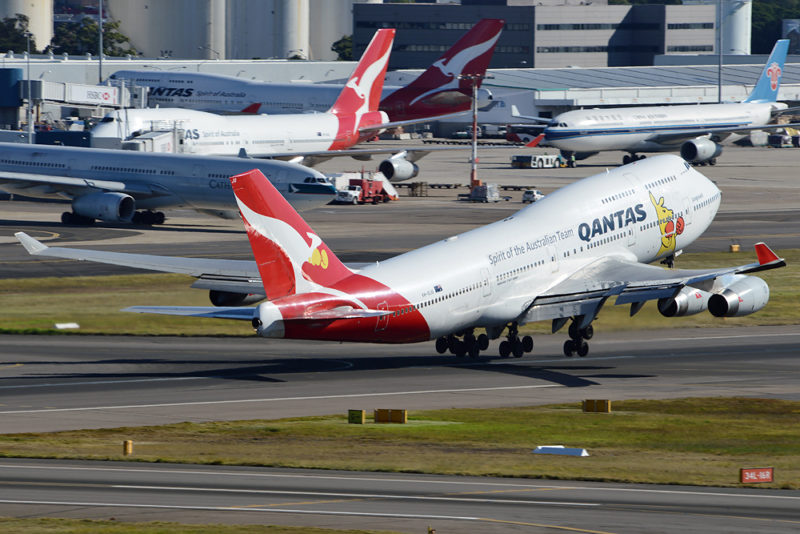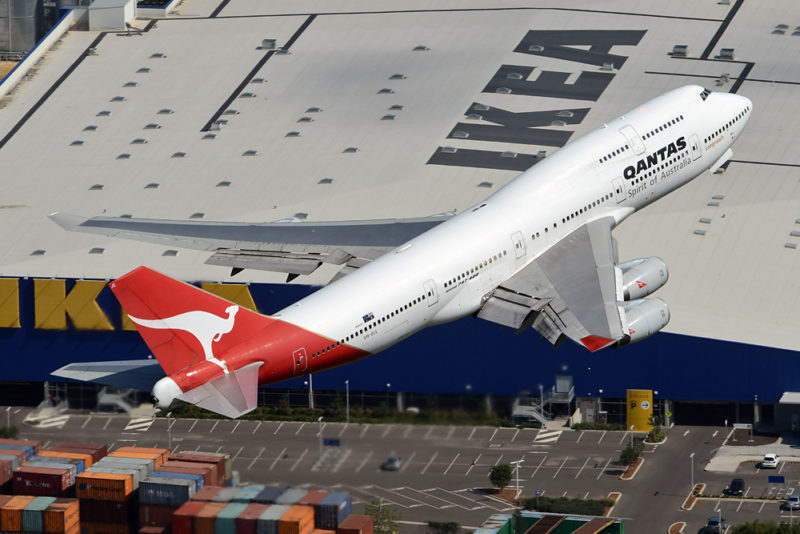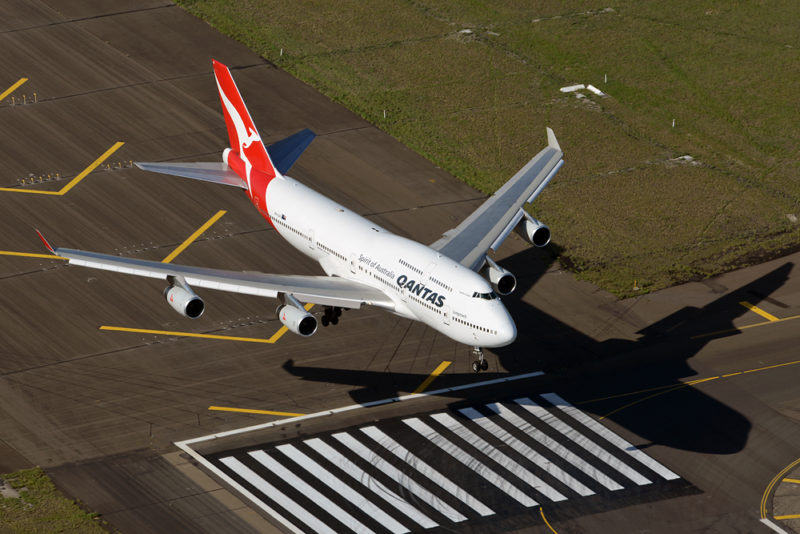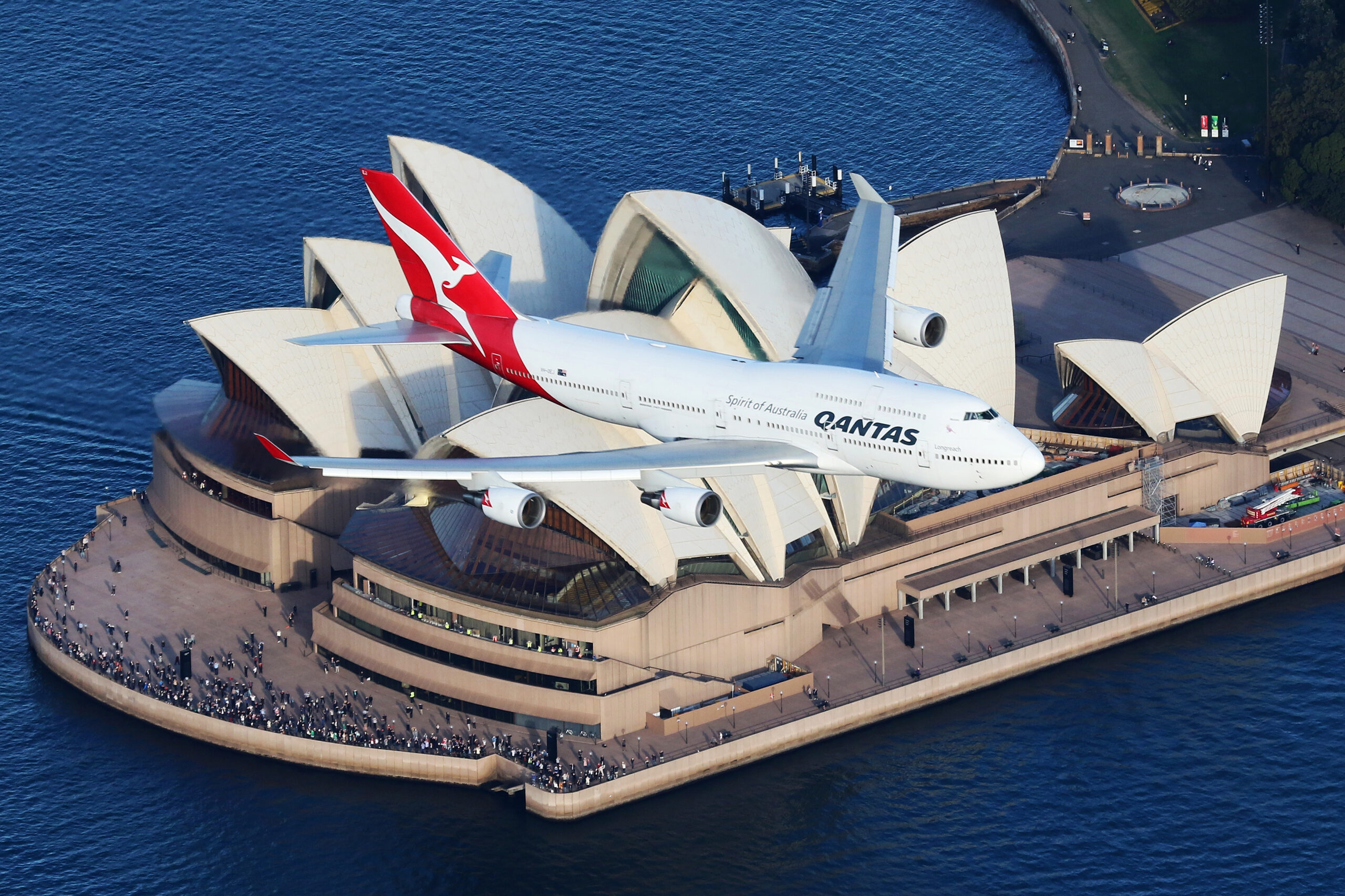Of all the aircraft retirements, there was never going to be one as significant as the last Qantas 747. Qantas, celebrating their centenary this year, have been flying international since before WW2 and were operating round the world (by flying to London via Asia/Europe and via the Pacific, San Francisco and New York) with 707s by 1959 (the transatlantic leg ended in the early 1970s). However the fares were out of the reach of everyone but captains of industry, movie stars and diplomats. Everyone else went by ship until the dawning of the age of the jumbo.
When Qantas’ first 747-238B was delivered to Sydney in 1971 it plugged Australia, the most distant of all continents, into the world map at last. Generations of Australians big overseas trips were on a Qantas 747, discovering neighbouring Asia and turning Singapore and Hong Kong into Aussie cities by association. Double decker bus tours of Europe – getting drunk in Munich and getting high in Amsterdam. In England’s capital of London, Earls Court became known to Brits and Aussies alike as Kangaroo Valley. Later, Australia's cultural focus widened to include California. All of this was because of the 747.
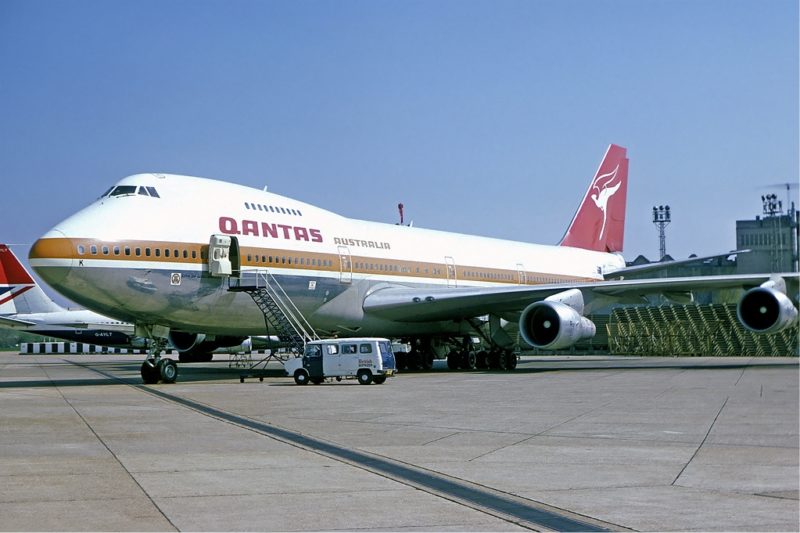
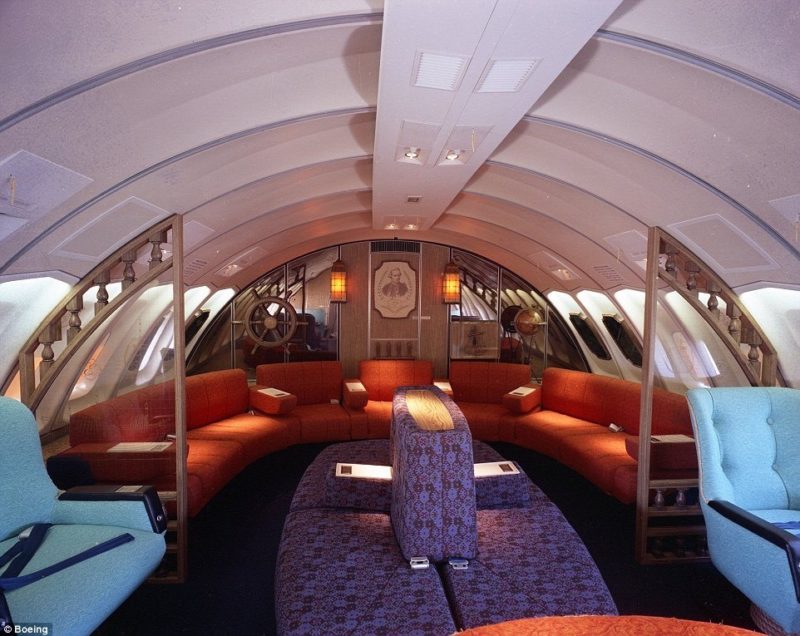
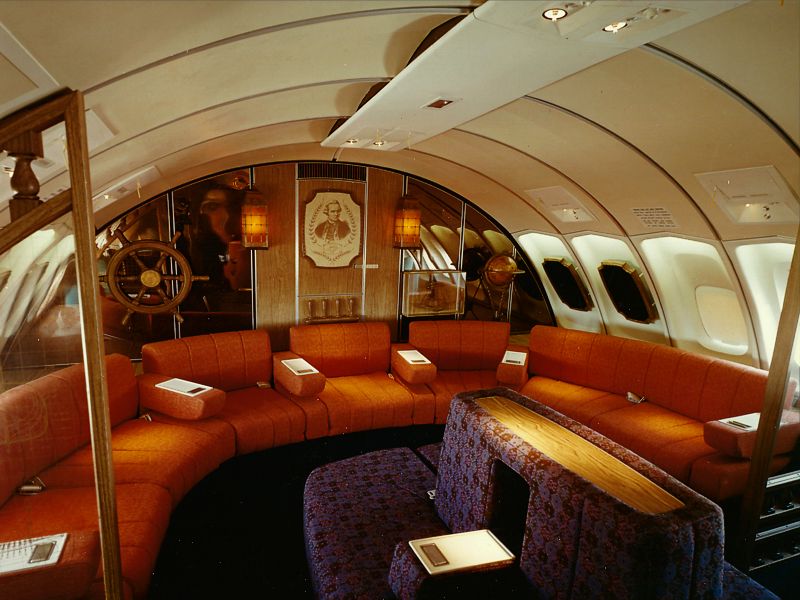
The fleet expanded in the early 1980s with Rolls-Royce powered 747-200Bs, which gave extra range and improved efficiency. These were followed by a pair of 747SPs, with a shortened fuselage but the original wing and engines; unsurprisingly, the SP stood for Special Performance. This exotic pair were used to operate into the short runway at Wellington in New Zealand (the only 747s powerful enough to fly there) and most famously to inaugurate Australia's first nonstop flights to the United States, overflying Honolulu for the first time.
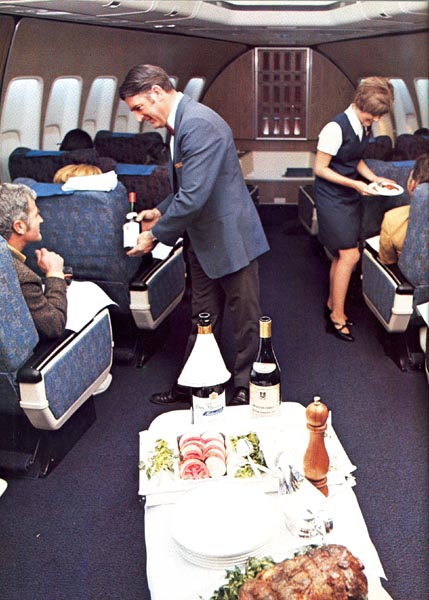
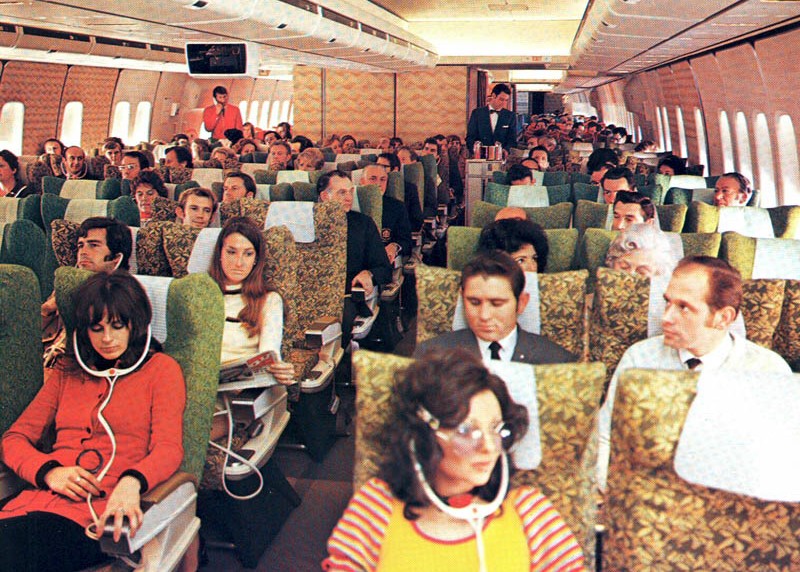

The route map served by the 747-200B and SP fleet included obvious staples such as London, Frankfurt, Bahrain, eBangkok, Hong Kong, Los Angles, San Francisco and New York, but, due to Australia's uniquely cosmopolitan makeup, also Belgrade, Manchester and Athens. The most exotic 747 destination was Damascus. Although Australia has a sizeable Lebanese population and Beirut is only a few hours' drive away, the real reason was because Syria insisted airlines make at least a once-weekly stopover as a condition of overflying their territory. It was cheaper for Qantas to stop once a week, even though traffic was minimal, than take a long detour to avoid Syrian airspace and Syria was able to use its geographical location to increase air service at its under served capital city.
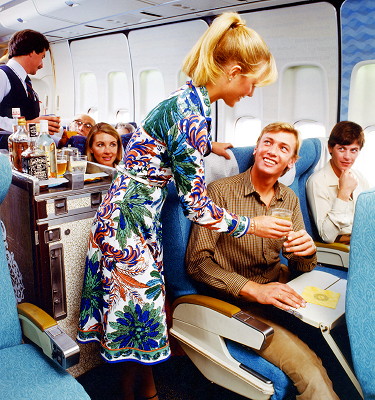
Qantas’ first 747-400, nicknamed Longreach (not only for the range of the new bird but Qantas’ founding town in remote outback Queensland), flew the then-world’s longest flight, from London to Sydney, on August 17th 1988; arriving over the harbour with a couple of hours of fuel still in the tank. Farewell 3am fuel stops in the Persian Gulf, hello fourteen hour nonstop sectors; such as Singapore to London and Sydney to Los Angeles.
The last Qantas 747 flight to London was in 2010 and the last to California was San Francisco in early December 2019, squeezed out by the A380 and B787. After that, the Queen Of The Skies was supposed to enjoy an eighteen month victory lap on the Johannesburg, Tokyo and Santiago runs and then the biggest farewell party the aviation world had ever seen.
Alas, the toll of coronavirus COVID-19 has brought a halt to almost all air traffic worldwide; with a ground stop expected to last months. However when global mass transit finally restarts, one of the great combinations, Qantas and the 747, will be missing at Kingsford-Smith and destinations on three other continents.
The last Qantas B747-400/ER, VH-OEJ, departed Sydney, Australia on 22nd July 2020. It drew an iconic kangaroo in the sky on its final journey to the airplane boneyard in Mojave, California via Los Angeles.
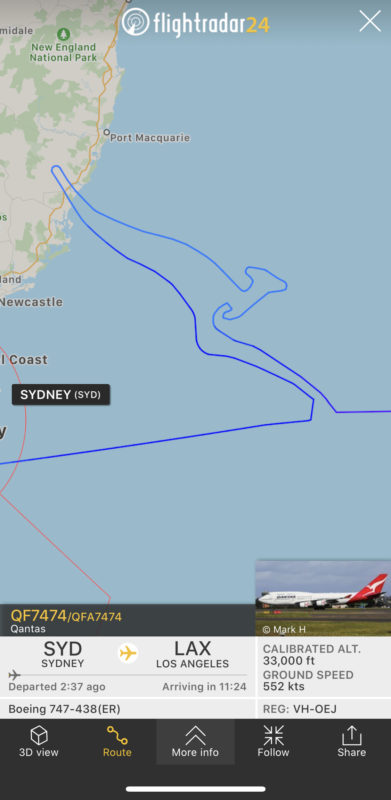
Cover Image: Tim Bowrey
Video of Qantas B747-400
Sam Chui has fond memories of photographing many Qantas B747 at Sydney during his college years. Here is a photo tribute to Qantas B747 from his collection.
